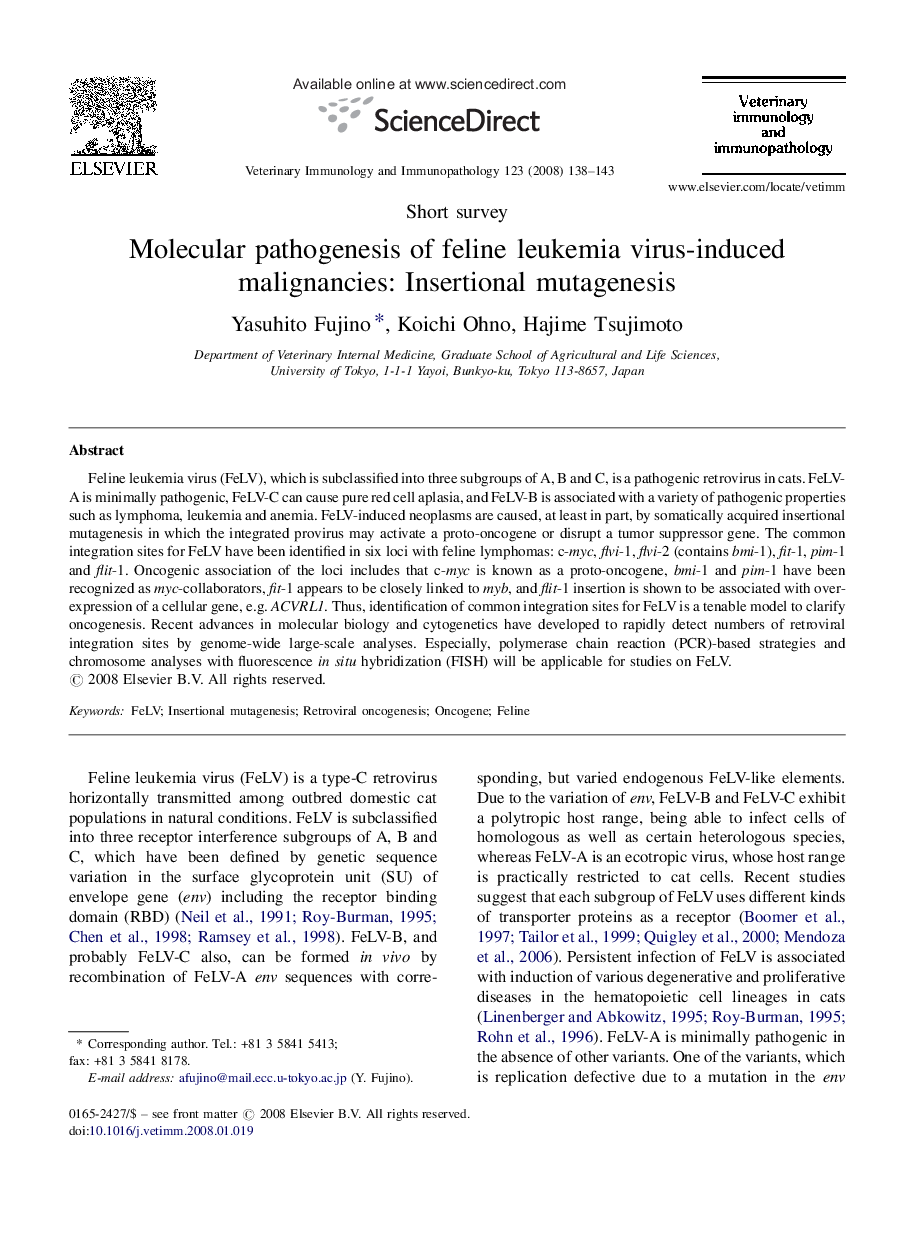| Article ID | Journal | Published Year | Pages | File Type |
|---|---|---|---|---|
| 2463087 | Veterinary Immunology and Immunopathology | 2008 | 6 Pages |
Feline leukemia virus (FeLV), which is subclassified into three subgroups of A, B and C, is a pathogenic retrovirus in cats. FeLV-A is minimally pathogenic, FeLV-C can cause pure red cell aplasia, and FeLV-B is associated with a variety of pathogenic properties such as lymphoma, leukemia and anemia. FeLV-induced neoplasms are caused, at least in part, by somatically acquired insertional mutagenesis in which the integrated provirus may activate a proto-oncogene or disrupt a tumor suppressor gene. The common integration sites for FeLV have been identified in six loci with feline lymphomas: c-myc, flvi-1, flvi-2 (contains bmi-1), fit-1, pim-1 and flit-1. Oncogenic association of the loci includes that c-myc is known as a proto-oncogene, bmi-1 and pim-1 have been recognized as myc-collaborators, fit-1 appears to be closely linked to myb, and flit-1 insertion is shown to be associated with over-expression of a cellular gene, e.g. ACVRL1. Thus, identification of common integration sites for FeLV is a tenable model to clarify oncogenesis. Recent advances in molecular biology and cytogenetics have developed to rapidly detect numbers of retroviral integration sites by genome-wide large-scale analyses. Especially, polymerase chain reaction (PCR)-based strategies and chromosome analyses with fluorescence in situ hybridization (FISH) will be applicable for studies on FeLV.
